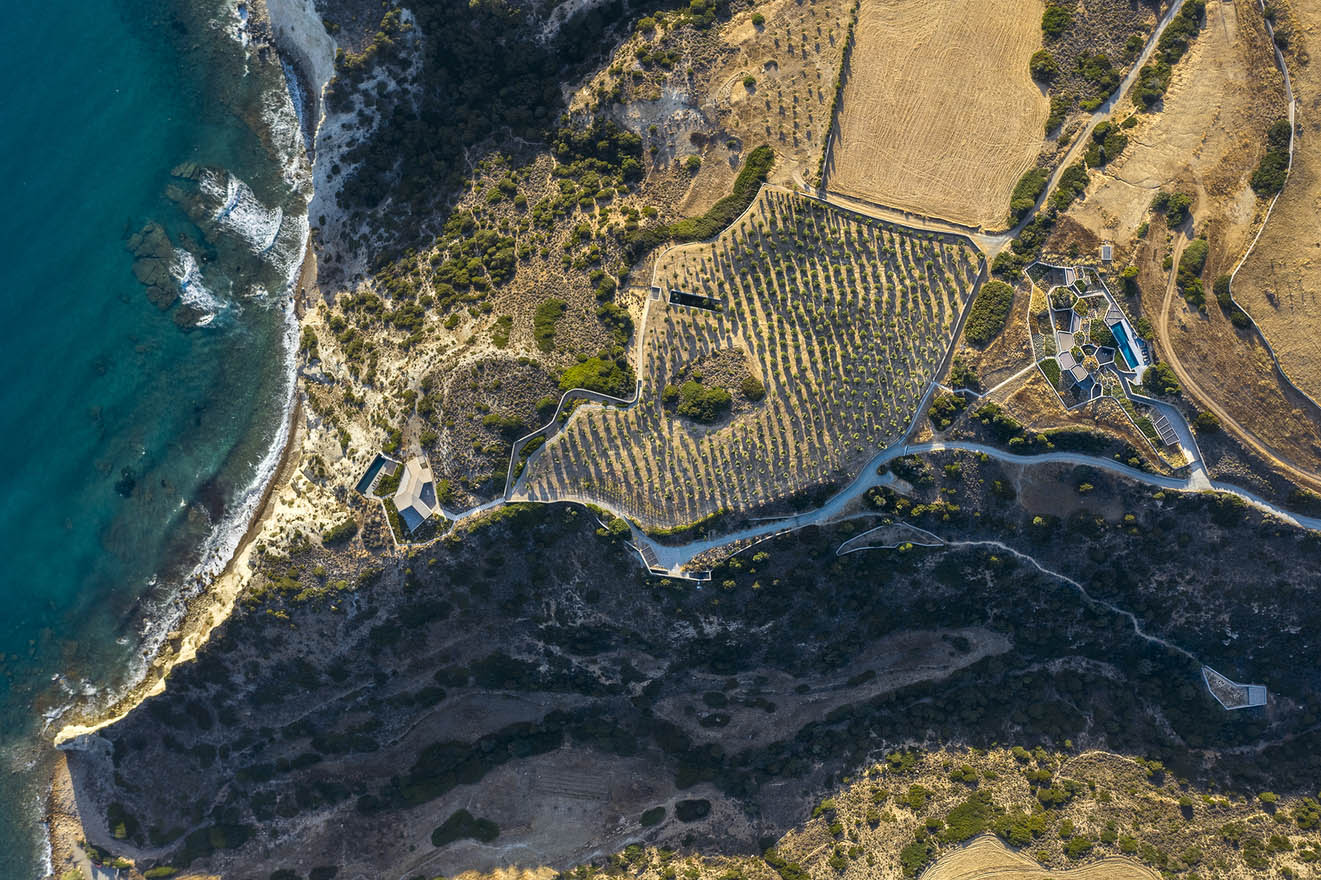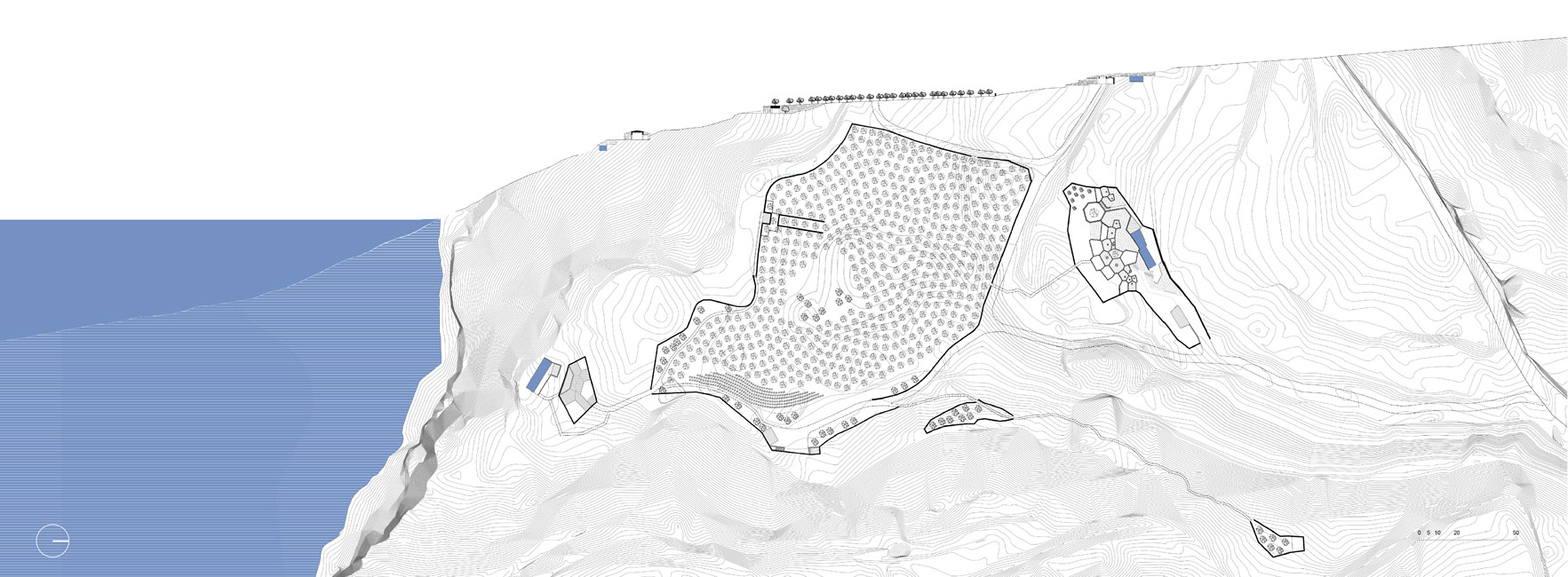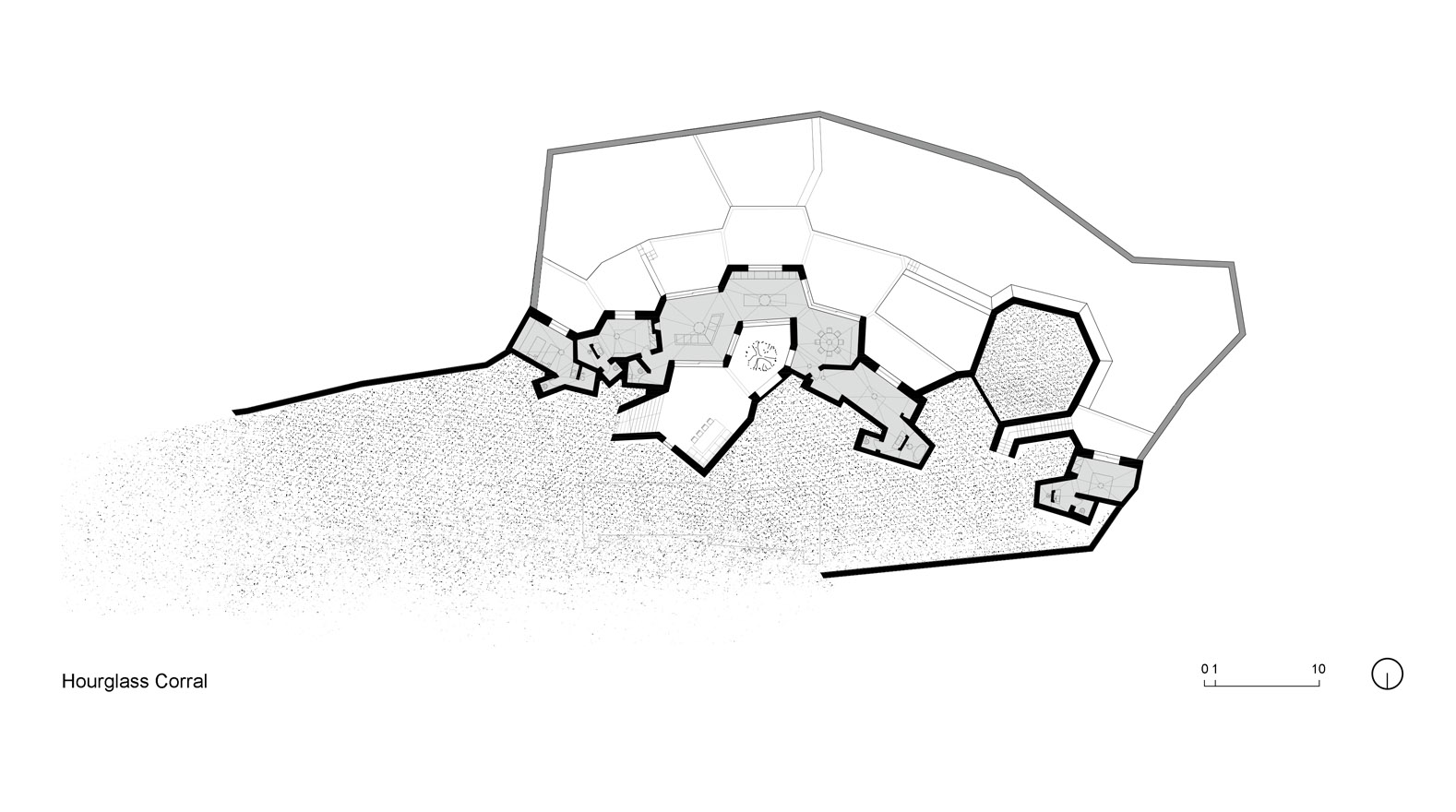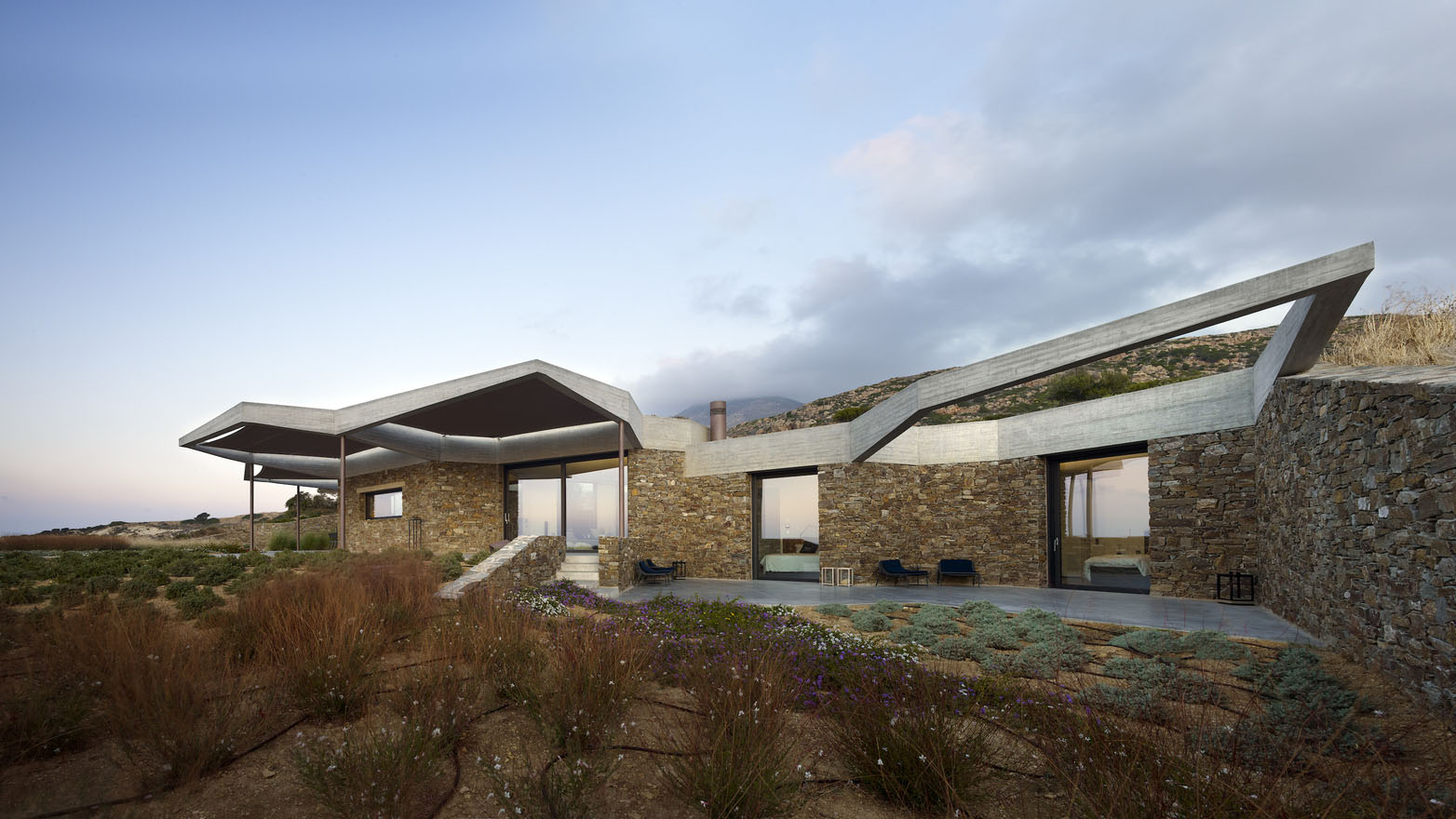As a whole, the project has been an ongoing investigation of what it means to integrate the domestic scale using sustainable strategies into its rural landscape. The result has been the effective protection of wild natural areas, the reclaiming of the productive use of agricultural zones and the redefinition of the experience of leisure within the broad and complex environments.

Photo: Yiorgis Yerolymbos.
Like the other corrals, the Hourglass Corral has a stone fence that separates and protects from each other the wild and the agricultural areas. Inside, its cultivation is dedicated to Mediterranean plant species used for the extraction of essential oils. The cultivated cells encompass the entire corral, covering the roofs of the buildings and making the house volumes blend into its landscape.

Photo: Yiorgis Yerolymbos.

“The Hourglass Corral is a house located in the Cycladic island of Milos, Greece. Its significance is best understood within its larger context. It is the most recent addition of a project called ‘Voronoi’s Corrals’ which began ten years ago and presently encompasses a territory of 90,000 square meters. As a whole, the project is an ongoing effort to integrate the ubiquitous ‘holiday home’ dotting the Southern European coasts within a larger social, cultural and economic context. Instead of ceding large areas of wilderness and agricultural land over to the pressures of the tourism industry, these corrals reinterpret the local heritage of creating territories for the cohabitation and mutual preservation of the wild, the rural and the domestic. Preserving the diversity of use and the productivity of the land means a continuing commitment and exchange with the local community and its economy beyond the limited time frame of the holiday seasons. It is a model for the symbiotic existence of the traditional living and productive landscape and the needs and idiosyncratic characteristics of the contemporary ‘leisure culture’”.
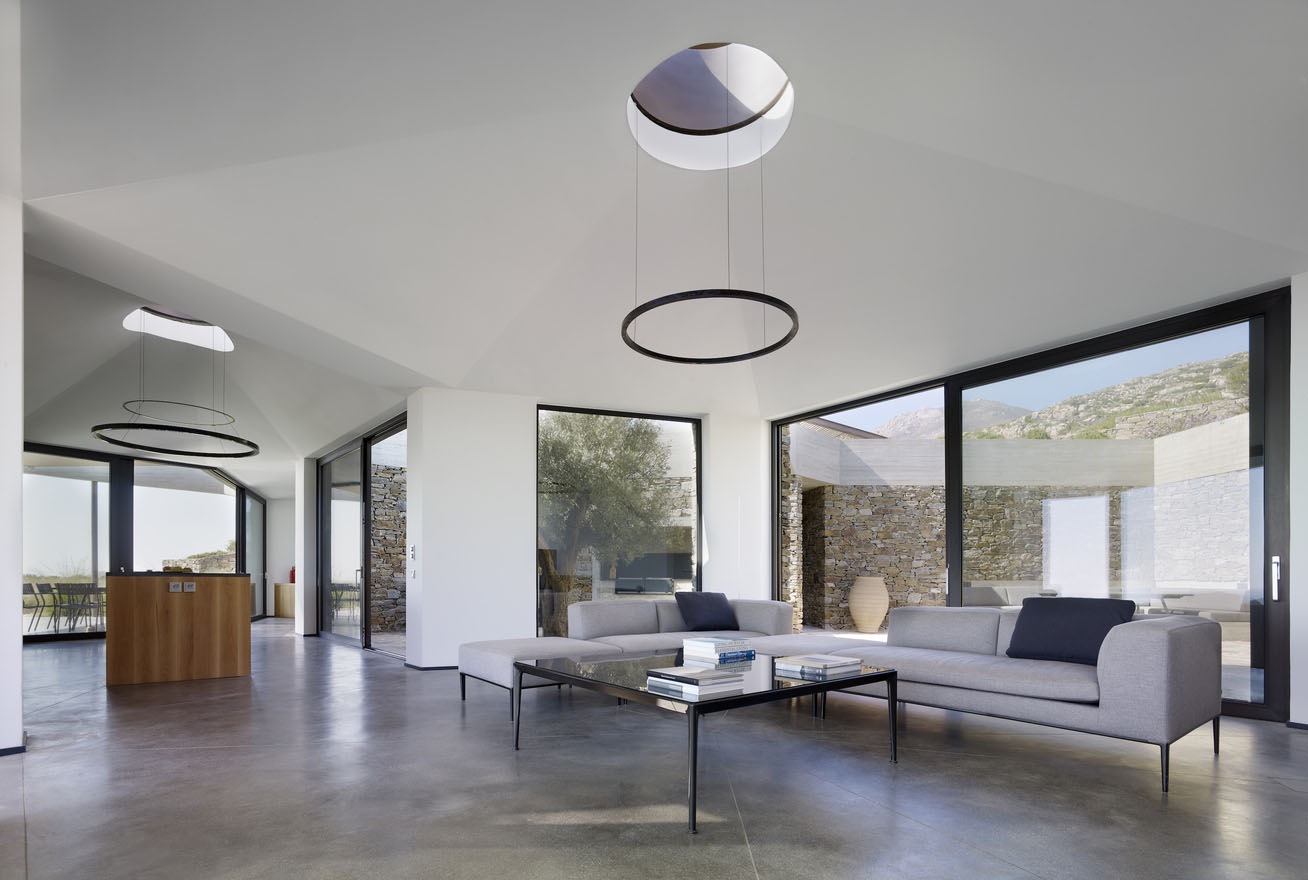
Photo: Yiorgis Yerolymbos.







